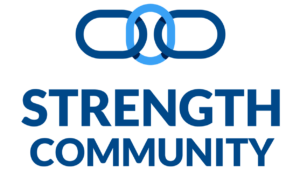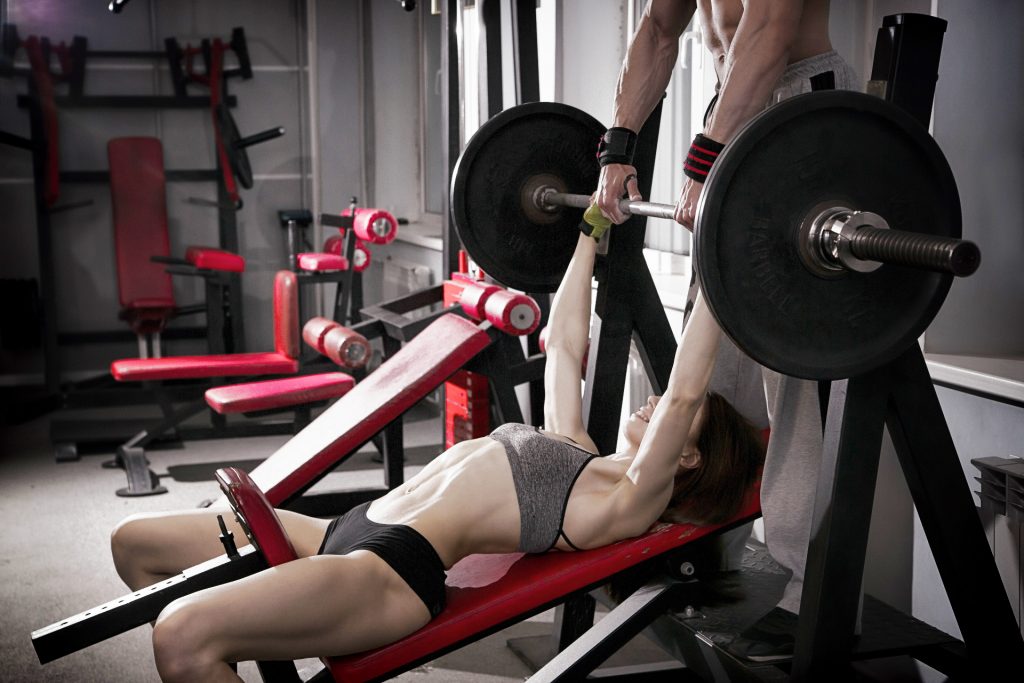I have had the privilege of being in a large number of gyms around the world, and that has allowed me to witness many different spotting techniques, and funny enough, they repeat themselves worldwide.
Those techniques (if this could be called a technique) go from the personal trainer or training partner that has 100% of the attention on what’s happening on social media to the point that when the trainee gets pinned or fails, the other doesn’t even realize, normally leading to an accident.
On the other side of the spectrum, you have the trainer or training partner that performs all the reps for the other person. I’m pretty sure you have seen them. They are the ones that are always grabbing the bar, dumbbells, machine, etc., making the movement “easier” for the other person.
For obvious reasons they are not worth the time explaining them, I won’t even call them spotting techniques, and in any case, stay away from them.
When do you need a spot?
In my opinion, there are 2 occasions:
-
When you are lifting a weight that can get you pinned.
Let’s say that your 5RM on the bench press is 200 Kg. (440 lbs.) and you are trying whether to get 6 reps with those 200 kgs., or do 5 reps 204 Kg. (449 lbs.).
When you are attempting a heavier weight or a higher number of reps that your body is not used to yet, having a spotter is very important because you don’t want to be choked under the bar, getting pinned in the bottom position of a squat, dumbbells possibly hitting you somewhere, etc. The spotting technique in a few minutes.
-
When you need the lifting implement to be handed.
Going back to the example of the bench press, if your positioning on the bench makes the un-raking of the bar a potential for injury, you need a spotter that can properly pass the bar.
Certain exercises or pieces of equipment don’t allow for an easy and risk-free starting of an exercise. Certain examples are bench press with a barbell in all angles, decline dumbbell presses, shoulder press with dumbbells, etc. In a few paragraphs, I’ll describe the right way to do it. Atlantis solved this issue with the pivot benches
Principles of Spotting
Yes, spotting is also subject to principles, if you want to minimize the risk of injury and get the most out of a training session.
-
Trust:
If you are spotting, you must “send” the other person the signal that you believe that he/she is going to make the lift. By the same token, the person being spotted must feel safe knowing that you are the spotter.
-
The reps should be done by the person training:
With rare exemptions that I’ll address in the following paragraphs if a person fails or gets pined on a lift, your work as a spotter is simply to take the person out of the sticking point and he/she must finish the rep. You should not complete the rep for that person. And this takes me to my next point.
-
Only touch the bar when it stops:
And when I say bar I mean bar, dumbbell, machine, or implement in general. When the bar stops, it will normally go down after a few milliseconds, and right before that happens is when you need to correctly spot, as mentioned in principle number 2. If the bar is still moving, even if that implies that the completion of the concentric portion will take 10 minutes, you have to stay away from the bar.
-
Keep your eyes on the person all the time:
In order to be able to react at the right moment, as mentioned in principle number 4, you must keep all your attention on the person that is being spotted, evaluate the speed of the bar or implement, and the body language. If you are good at reading those 2 aspects of the lift, for sure you can provide a better spot.
-
Be prepared for the unexpected:
A lot of different situations can happen during a lift. A few examples here:
- The central nervous system can shut down and the person can lose strength over the bar, making the bar simply fall on his/her chest (in a bench press example).
- The person can also lose control over a dumbbell and it might fall over the person’s face. This can happen with bench presses with dumbbells, shoulder presses, and triceps extensions.
- A miscalculation of the weight can lead to an unexpected drop of the weight being lifted.
- An increase in the range of motion when the person is training in a partial range of motion can lead to a sudden failure in the lift.
Putting everything together
In a very simplistic explanation, a good spotter does the following check before the lift in order to offset some of the possible unexpected situations:
- The weight is the same on both sides.
- The implement has locks on both sides. This is specific for bars and adjustable dumbbells.
- Confirms the weight to be lifted by simply saying “you are going to lift XYZ Kg or pounds
Then the spotter passes the bar, dumbbells, or implement in the perfect position for the lift, in such a way that the person that’s performing the lift simply has to start it without any type of adjustment. Ben Prentiss says that a bar passed the wrong way completely ruins a set, and I agree with him 100%. The energy wasted and stress created by having to adjust the implement for a lift will reduce the performance in that particular set. This complies with the second reason to ask for a spot. This point reminds me that once we went together to train at a gym with Matt Wenning and he asked me for a spot doing floor presses. His triceps workout ended up being a sumo deadlift workout for me due to the amount of weight he was lifting and the need of passing the bar in the perfect spot.
After passing the implement, the spotter takes one step back. With this mere action, you are telling the person being spotted that you believe that he/she can complete the lift. In the same sense, the person being spotted knows that you are just one step away from quickly helping. This complies with the principle of trust. On top of that, it’s very uncomfortable to have the genitals of your spotter right above your face when you are about to perform a lift.
If the person being spotted fails during the lift, the spotter is right there paying full attention and touching the bar or implement only when it stops. Under normal conditions, the amount of strength applied by the spotter shouldn’t be superior to 1 Kg or 2.2 pounds. The whole point is to help the person pass the sticking point and complete the rep. This complies with reason 1 and principles 2, 3, 4, and 5. If you have to use a lot of strength is whether because the weight was not properly selected or one or more of the unexpected situations happened.
And finally, the good spotter will stop the set if he/she needs to act. Trying to continue a set that has already failed simply makes no sense as it will break all of the principles mentioned above. The only exception to this is when purposely the person is training for total failure. This means that the trainee performs reps until concentric failure, then until isometric failure, and finally until eccentric failure. Now you understand where the name of the training technique comes from. With it, as a spotter be prepared to do a lot of work, and as a trainee expect a good soreness and longer recovery times.
Spotting is not as simple as helping a person in the gym. It has principles to follow, requires proper technique, and depending on the lift to be spotted, certain levels of strength.
In the Structural Assessment Class, I go over this and more details for properly spotting.
Coach Carlos Castro

